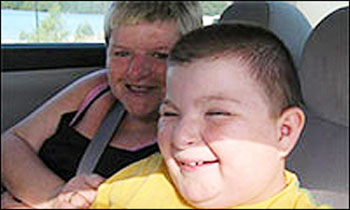 In the second of a series of articles Shona Chambers talks about learning Makaton and shares some useful hints and tips. Read Part 1
In the second of a series of articles Shona Chambers talks about learning Makaton and shares some useful hints and tips. Read Part 1
The first Makaton workshop I joined was a Foundation Workshop for Professionals as no-one was doing beginners workshops at that time. The professional route later turned out to be just right for me.
Makaton training takes two routes: the Beginner and then Follow-Up Workshops for parents and carers which then lead on to local tutor status and the Foundation and Enhancement Workshop for professionals can lead to regional tutor status after more training. Whichever route you take it is important to remember that children and young people for whom Makaton could become a way of communication are not taught in the same way as you will be trained. Every child is very different and as you go through the various workshops you will be shown how to differentiate teaching Makaton signs and symbols from child to child and how to personalise Makaton to each individual child.
When I began signing with with my son Michael he was very interested, but I was very conscious that I must not overload him, so I decided on a few basics at first. Michael has always loved his food and, like me, has a sweet tooth. Like most kids, biscuits motivated him! So we began with his favourite things – biscuits, yoghurts, juice – closely followed by mummy and daddy. His favourite pastime was to read books, and watch DVD’s. He had lots of toys but never quite knew how to play with them – preferring to throw them and watch them fall, listening to the noise they made as they hit the hall floor, wall, or sometimes window! ‘Book’ was on the early list and ‘DVD’. Although Michael has autism he has always had very good eye contact so he watched intently whenever I signed - and because I always spoke the word too, he was given extra clues through the sound, watching my lips move without even realising it.
As a Makaton regional tutor, I always advise other parents of children with any communication difficulty, if they tell me that their child’s eye contact is very fleeting or even fairly non-existent, to give signing a try, as it has been shown to work for some children with very limited eye contact. I advise any parent not sure about Makaton to read up on the research on the topic, either via the Makaton website or other respected article sources. Every child is different, so what works for one may not be of any interest to another. Research shows that some children with autism may prefer to use PECS (Picture Exchange Communication System) as their chosen form of communication. Makaton symbols can be used for these children. Personally I always advise to back up any PECS symbols with the corresponding sign. Michael uses PECS too. His Pecs use is very good and in many ways better than his signing, but he chooses to communicate using a mixture of both which is great.
Michael has very chunky hands and very broad thumbs (these are a symptom of Rubinstein Taybi Syndrome) so he can sometimes struggle with fine motor skills. His signs are not always clear but he will always try – which is brilliant! Sometimes Michael will make up his own version of a sign if he cannot get his hands or fingers to copy mine – that’s ok but we must be aware that we do not start copying his versions of these signs – as this is a very easy trap to fall into. It can be really easy to get lazy with your signs but really sloppy signs just confuse and that confusion may lead to a toy bouncing off your head! Also, always remember to use your dominant hand for the most part of the sign – so if you are right-handed use your right hand, left use the left. Consistency is key!
When Michael is struggling I will try to help him by using ‘hand over hand’, although this does not always work If he is not in the mood. Then, I will leave it, as the last thing I want to do is to make signing uncomfortable and put him off. Consistency of signs is vital; a good tip is to practice signing in front of a mirror. Make sure that everyone around him knows his version of a particular sign too – this is very important as can lead to all sorts of problems. An example of this is when school reported that they thought that Michael had a pain in his tummy as he kept ‘patting’ it – I immediately realised that this was Michael’s version of ‘toilet’! We also discovered that they thought that Michael always wanted the same reading book in school – and when he was given the same book each time he got very cross, and they did not know why. Michaels sign for ‘book’ is actually the sign for ‘same’. I now make sure that school are aware of any signing differences!
Read Part 3